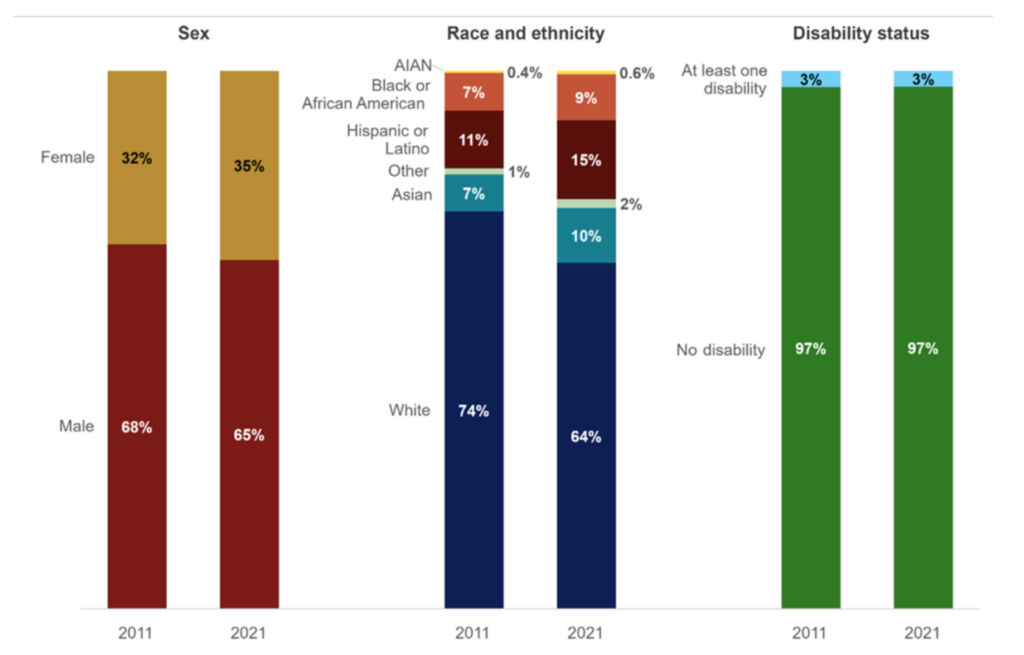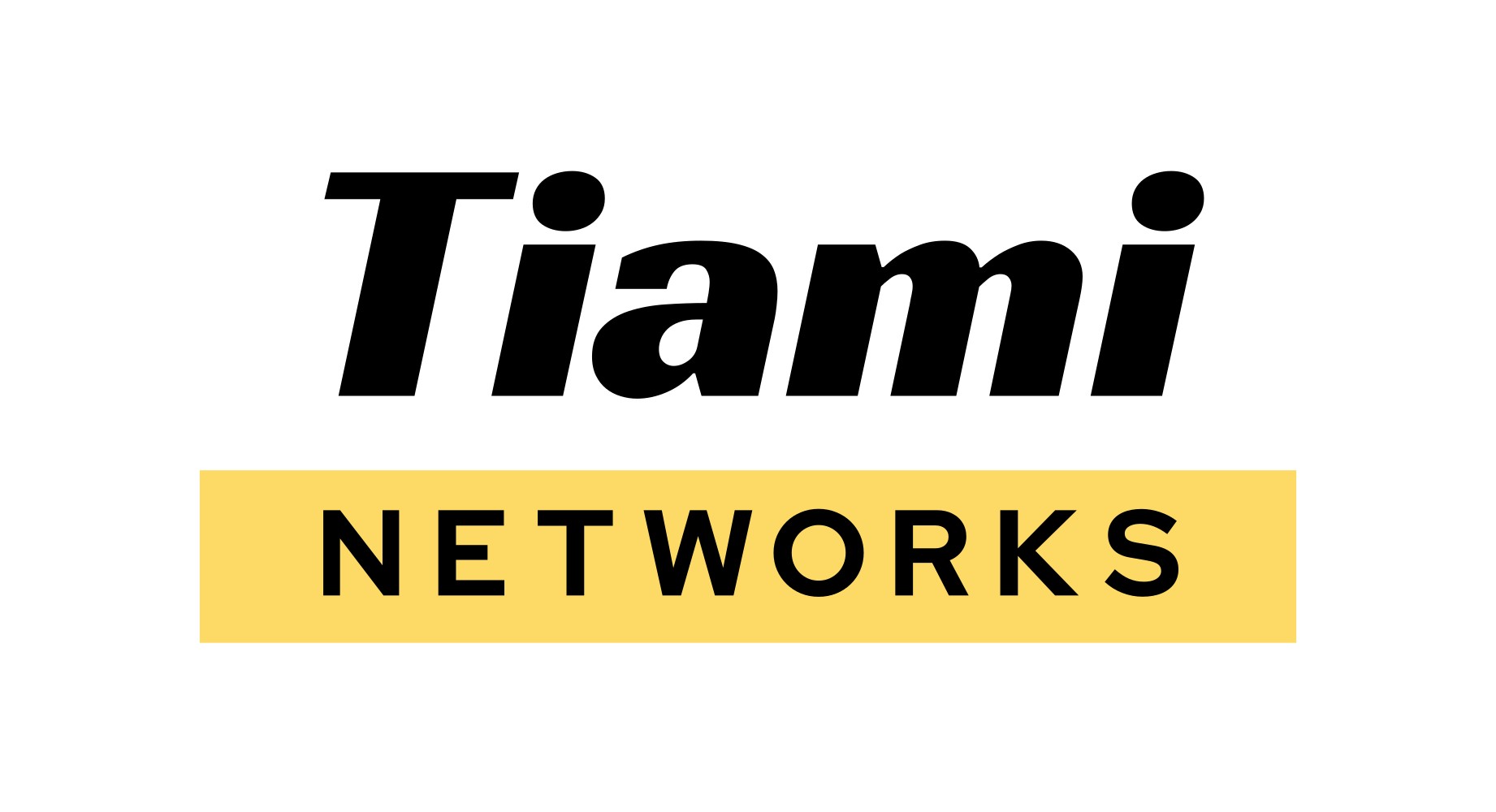Latest Blog
Tiami Networks Announces Strategic Collaboration to Transform 5G Networks
February 22, Elk Grove, California – Today, Tiami Networks announces a strategic collaboration with Intel, a leader in computing innovation. This collaboration marks a significant milestone in Tiami Networks’ quest to revolutionize 5G technology, transforming global 5G networks into the world’s largest radar system.
“Elk Grove is proud to be at the forefront of this technological leap. Piloting PolyEdge™ for traffic flow monitoring is not just about embracing innovation; it’s about actively contributing to a smarter, safer, and more efficient community,” commented Darrell Doan, Economic Development Director, Elk Grove, California.
A New Era of Connectivity: AI + 5G + Radar on Edge Devices
The collaboration with Intel is pivotal in the development of PolyEdge ™, Tiami Networks’ cutting-edge technology that combines AI, 5G, and radar capabilities on edge devices. Tiami employs state-of-the-art 5G signal processing and proprietary machine learning algorithms for sensing, enhanced by Intel’s cutting-edge FPGA artificial intelligence framework.
This innovative approach is set to redefine connectivity and data analysis, promising significant advancements in areas like public safety, environmental monitoring, and smart city initiatives. By providing real-time data analysis, PolyEdge ™ can help in efficient resource allocation, emergency response optimization, and even tracking environmental changes with unprecedented accuracy.
“Intel is excited to see Tiami Networks utilize our technology in a transformative way. This collaboration showcases the versatility of Intel’s FPGA artificial intelligence solutions and paves the way for groundbreaking advancements in 5G capabilities,” said Mike Fitton, Network Business Division, Intel.
Looking Ahead
This collaboration represents a leap forward in technological integration, combining the strengths of Tiami Networks’ innovative vision and Intel’s robust technological infrastructure. The initiative is poised to set new standards in connectivity and data analysis, offering transformative solutions for cities, industries, and societies worldwide. “This collaboration with Intel is a game-changer. It enables us to bring our innovative technology to market, transforming the way we understand and interact with our environment. We’re creating a new paradigm where 5G networks do more than connect – they perceive and respond.”, said Amitav Mukherjee, CEO of Tiami Networks
Connect and Learn More
Tiami Networks will be showcasing PolyEdge™ at Mobile World Congress in Barcelona from 26-29 February, 2024. Stop by Stand #6F48 and experience the future of 5G.
About Tiami Networks
Founded by seasoned professionals from renowned telecom giants such as Ericsson, Verizon, Qualcomm, and Nokia, Tiami Networks is a visionary startup based in California. With deep-rooted expertise in telecommunications, our team is dedicated to revolutionizing the global 5G landscape. Our mission is to transform the 5G system into the world’s largest distributed radar network, harnessing this technology for consumer and commercial applications. By integrating advanced AI and radar technology with 5G networks, Tiami Networks aims to create smarter, safer, and more efficient environments, enhancing connectivity and data analysis capabilities across various sectors. Our commitment to innovation positions us at the forefront of the next wave of technological advancements, poised to redefine the future of communication and environmental intelligence. Learn more at www.tiaminetworks.com
About Intel
Intel (Nasdaq: INTC) is an industry leader, creating world-changing technology that enables global progress and enriches lives. Inspired by Moore’s Law, Intel continuously works to advance the design and manufacturing of semiconductors to help address our customers’ greatest challenges. By embedding intelligence in the cloud, network, edge and every kind of computing device, Intel unlocks the potential of data to transform business and society for the better. To learn more about Intel’s innovations, go to newsroom.intel.com and intel.com.
For more information, please contact:
Tiami Networks
Mr. Tyrell Junius
Email: tjunius@tiaminetworks.com
Intel
Mr. Bret Gustafson
Email: bret.gustafson@intel.com
PolyEdge Solution Brief: Mobile World Congress Barcelona Demo in Partnership with Intel
Recent Blogs
Tiami Networks Announces Strategic Collaboration to Transform 5G Networks
February 22, Elk Grove, California - Today, Tiami Networks announces a strategic collaboration with Intel, a leader in computing innovation. This collaboration marks a significant milestone in Tiami Networks' quest to revolutionize 5G technology, transforming global 5G networks into the world's largest radar system.
"Elk Grove is proud to be at the forefront of this technological leap. Piloting PolyEdge™ for traffic flow monitoring is not just about embracing innovation; it's about actively contributing to a smarter, safer, and more efficient community," commented Darrell Doan, Economic Development Director, Elk Grove, California.
A New Era of Connectivity: AI + 5G + Radar on Edge Devices
The collaboration with Intel is pivotal in the development of PolyEdge ™, Tiami Networks' cutting-edge technology that combines AI, 5G, and radar capabilities on edge devices. Tiami employs state-of-the-art 5G signal processing and proprietary machine learning algorithms for sensing, enhanced by Intel’s cutting-edge FPGA artificial intelligence framework.
This innovative approach is set to redefine connectivity and data analysis, promising significant advancements in areas like public safety, environmental monitoring, and smart city initiatives. By providing real-time data analysis, PolyEdge ™ can help in efficient resource allocation, emergency response optimization, and even tracking environmental changes with unprecedented accuracy.
"Intel is excited to see Tiami Networks utilize our technology in a transformative way. This collaboration showcases the versatility of Intel's FPGA artificial intelligence solutions and paves the way for groundbreaking advancements in 5G capabilities," said Mike Fitton, Network Business Division, Intel.
Looking Ahead
This collaboration represents a leap forward in technological integration, combining the strengths of Tiami Networks' innovative vision and Intel's robust technological infrastructure. The initiative is poised to set new standards in connectivity and data analysis, offering transformative solutions for cities, industries, and societies worldwide. "This collaboration with Intel is a game-changer. It enables us to bring our innovative technology to market, transforming the way we understand and interact with our environment. We're creating a new paradigm where 5G networks do more than connect – they perceive and respond.", said Amitav Mukherjee, CEO of Tiami Networks
Connect and Learn More
Tiami Networks will be showcasing PolyEdge™ at Mobile World Congress in Barcelona from 26-29 February, 2024. Stop by Stand #6F48 and experience the future of 5G.
About Tiami Networks
Founded by seasoned professionals from renowned telecom giants such as Ericsson, Verizon, Qualcomm, and Nokia, Tiami Networks is a visionary startup based in California. With deep-rooted expertise in telecommunications, our team is dedicated to revolutionizing the global 5G landscape. Our mission is to transform the 5G system into the world's largest distributed radar network, harnessing this technology for consumer and commercial applications. By integrating advanced AI and radar technology with 5G networks, Tiami Networks aims to create smarter, safer, and more efficient environments, enhancing connectivity and data analysis capabilities across various sectors. Our commitment to innovation positions us at the forefront of the next wave of technological advancements, poised to redefine the future of communication and environmental intelligence. Learn more at www.tiaminetworks.com
About Intel
Intel (Nasdaq: INTC) is an industry leader, creating world-changing technology that enables global progress and enriches lives. Inspired by Moore’s Law, Intel continuously works to advance the design and manufacturing of semiconductors to help address our customers’ greatest challenges. By embedding intelligence in the cloud, network, edge and every kind of computing device, Intel unlocks the potential of data to transform business and society for the better. To learn more about Intel’s innovations, go to newsroom.intel.com and intel.com.
For more information, please contact:
Tiami Networks
Mr. Tyrell Junius
Email: tjunius@tiaminetworks.com
Intel
Mr. Bret Gustafson
Email: bret.gustafson@intel.com
PolyEdge Solution Brief: Mobile World Congress Barcelona Demo in Partnership with Intel
The Imperative of Strengthening Skilled Labor for National and Economic Security: A Lesson from History
Following Labor Day observation, a tribute to the labor force that forms the nation's core, the critical conversation around fortifying skilled labor in the 14 essential technology areas for national and economic security gains prominence. The Bureau of Labor Statistics estimates that between 2021 and 2031, jobs for cybersecurity analysts will grow by 35% and software developers by 25%, outpacing the average 5% growth rate. This forecast, however, juxtaposes alarmingly with the existing deficiency in skilled labor, forming a paradox that warrants scrutiny.
Fortune highlights that the specialized talent arena has evolved into a global battlefield. Initiatives in countries like the United Arab Emirates, Canada, and Australia, which offer STEM and Entrepreneur VISAs, demonstrate the aggressive strides taken to attract high-skill professionals. Notably, a National Foundation for American Policy study illustrates that 55% of the U.S.'s billion-dollar startups feature at least one immigrant founder. This evidence robustly dispels notions of immigration as an economic drain. Instead, it attests to the essential role immigrants play in fostering technological innovation and economic development in the country.
Mechanisms like the STEM Optional Practical Training (OPT) augment the capabilities of the private sector and the Defense Industrial Base (DIB) by including international STEM scholars. According to a 2019 Department of Homeland Security report, there were an estimated 223,284 international students in STEM OPT between 2008 and 2017, providing a significant talent pool.
"The OPT-to-permanent residency route is fraught with delays and a perilous H1-B lottery as an intermediate step," says Tiami founder Amitav Mukherjee. "Many of the applicants to our career openings are visa holders and require support for obtaining work authorization."
Despite solid progress in harnessing international talent, limited U.S. minority participation and historical barriers exist in STEM today. The National Science Foundation (NSF) published its report on diversity in science, technology, engineering, and mathematics. The report shows that there has been very little progress in increasing diversity in the STEM workforce from 2011-2021 shown below.

To tailor effective reforms, one must scrutinize historical and contemporary policies that have indirectly and substantially discouraged minorities from grasping growth opportunities in these pivotal sectors.
The Present Challenge: 14 Critical Technology Areas
The United States has judiciously identified 14 technology areas—from Artificial Intelligence to BioTech —as critical national security and development vectors. These domains command an amalgam of specialized skills and inventive thinking. The director of the Defense Innovation Unit (DIU), Doug Beck, stated during the Emerging Technology Defense Conference, “Talent is available, willing to relocate and take 90% pay cuts, but most of that talent lives in expensive cities, and hiring authorities need to move faster.” In light of Director Beck's cogent observations, it becomes manifestly clear that the onus of optimizing this reservoir of talent—eager yet geographically constrained—falls upon the acceleration of recruitment procedures within these crucial technological sectors.
The United States has undertaken precise actions to cultivate local talent. NASA and the U.S. Department of Education have recently signed a memorandum of understanding to enhance STEM education. These efforts aspire to broaden STEM career pathways and increase representation in these 14 critical technology sectors by focusing on diversity, equity, and inclusion. The state Michigan announced its plan to increase domestic microchip production through targeted investments for PreK-12 programs. Despite such progress, as highlighted in a Brookings article, the Creating Helpful Incentives to Produce Semiconductors and Science (CHIPS) Act, while notable, has its focus narrowly set on financial incentives and fails to address other crucial elements like mentorship, access to professional networks, and career services. This oversight could limit the full utilization of the Act in building a robust and diverse skilled labor force in technology areas vital to national security.
Given the above data, one could argue for a more comprehensive approach to labor force development. While initiatives like STEM OPT, the state of Michigan microchip production, and collaborations between NASA and educational departments are positive steps, the CHIPS Act reveals that gaps still exist in addressing the full range of needs for skilled labor force development from grades PreK-12 in historic underinvested neighborhoods.
The Past is Prologue: Title XI and Redlining
A nuanced understanding of the past is indispensable to address present challenges. Federal policies such as Title XI in education and redlining in housing have historically laid an uneven foundation, particularly impacting minority communities. Their ramifications persist today, contributing to the shortage of skilled labor in critical technology sectors.
Emerging from the Education Amendments of 1972, Title XI was designed to extirpate discrimination based on sex in educational programs subsidized by federal monies. However, its reach has been fundamentally constrained by pervasive social prejudices. According to the NSF, women comprise 28% of the STEM workforce. This underrepresentation is exacerbated among minority women. While Title XI had laudable aims, it failed to address the comprehensive barriers marginalized communities face. The limited reach of this policy manifests today as an acute shortage of domestic skilled labor in technology and engineering.
Tracing its roots to the 1930s, the practice of redlining saw federal agencies ascribing "credit risk" status to neighborhoods, a classification covertly correlated with racial composition. Financial inequities resulted in the denial of credit and financial infrastructure, pushing these locales into economic retrogression.
The National Community Reinvestment Coalition found that 74% of neighborhoods marked as hazardous ('redlined') in the 1930s were likelier to comprise low-income, minority communities today. Such systemic economic stagnation has, in turn, perpetuated a cycle of poor education and limited career opportunities. The Education Commission of the States shared that schools in high-poverty areas are less likely to offer advanced math and science courses that are often prerequisites for STEM careers. Lack of STEM investment in historically marginalized communities directly impacts the readiness of individuals from these communities to participate in high-growth sectors as future employees and business owners, including the 14 technology areas deemed critical for national security.
Both Title XI and redlining, although disparate in intent and focus, converge in their cumulative effect: they have restricted the access of minority communities to burgeoning fields essential for national wellbeing. It is not just an issue of social justice but national competence and security.
As we engage in discussions surrounding skilled labor shortages and national security, these historical policy failures must inform future strategies. The data points towards an inextricable link between past policies and present challenges. We must continue to examine how specific federal policies, such as Title XI education and redlining within the housing market, created and continue to enable an uneven playing field, particularly for minority communities. Comprehensive reforms rooted in understanding these systemic issues are needed to redress this gap effectively.
Room for Contemplation
While strengthening skilled labor is undeniably essential, proceeding with nuance is imperative. Some critics might argue that focusing on specialized skills could overlook other vital areas, such as healthcare and social services, which also face labor shortages. However, given China's threat of global competition, the CHIPs act was politically justified with bipartisan support. The U.S. Commerce Secretary Gina Raimondo called on students of every level of education to pursue careers in semiconductor manufacturing and related industries. Nonetheless, the nature of the 14 technology areas is such that advancements in them could invariably benefit these other sectors.
The gravity of bridging the skilled labor gap becomes apparent, not just as an economic necessity but as an imperative for national security. As we look forward to future Labor Days, it is incumbent upon policymakers, technologists, and public and private sector leaders to use this as an inflection point for change, leveraging historical lessons and data to devise holistic strategies that are inclusive and effective. Such camaraderie requires a holistic approach that draws lessons from the historical shortcomings of policies like Title XI and redlining while also keeping a keen eye on the future needs of the 14 critical technology sectors. The United States can only truly secure its domestic and global standing through such a concerted effort.


